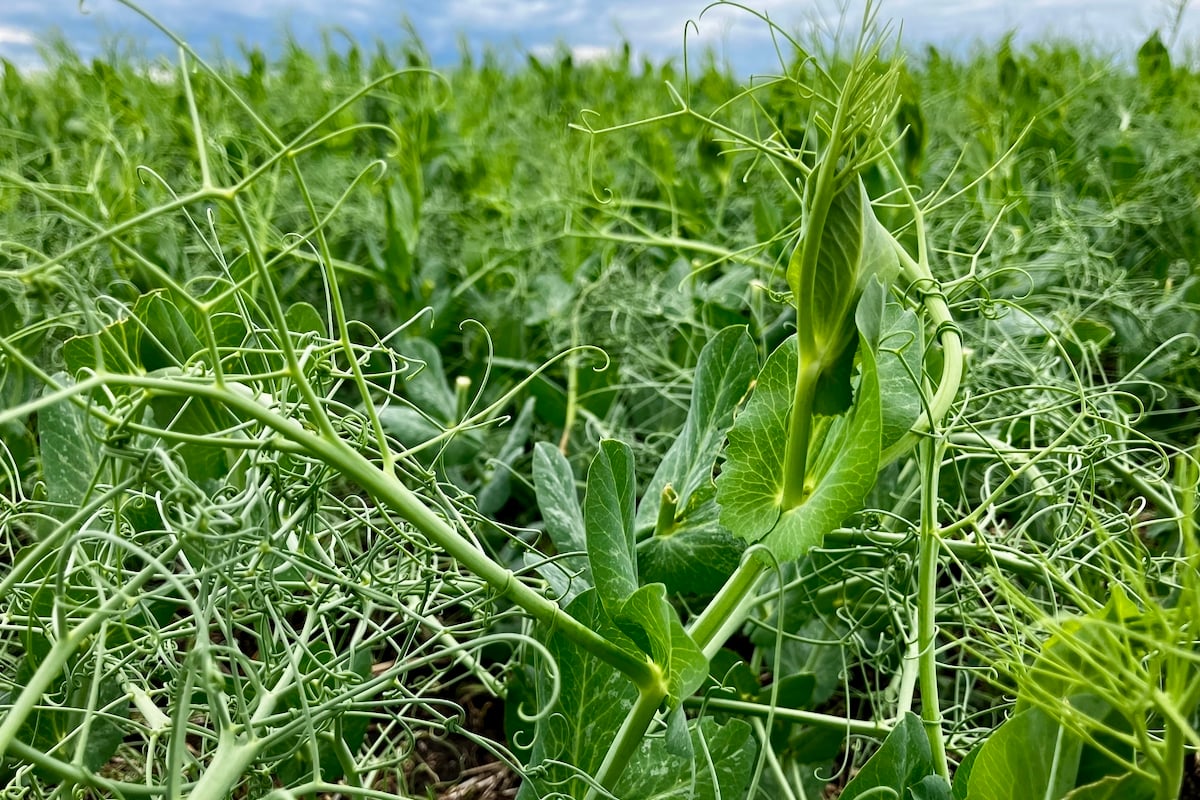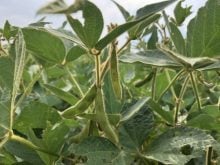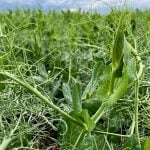Updated, Feb. 22 — Developing countries accounted for the first time last year for more than half the global biotech crop area, though the United States remains the primary nation making use of genetically altered crops, according to an industry report.
"The developments we will see over the next five years will be in favor of developing countries. That is where the mouths are that we have to feed," said Clive James, chairman of the International Service for the Acquisition of Agri-Biotech Applications (ISAAA), which issued the report.
Read Also

India slaps 30 per cent import duty on yellow peas
India has imposed a 30 per cent duty on yellow pea imports with a bill of lading date on or after Nov. 1, 2025.
ISAAA is a pro-biotech industry organization and annually releases a survey of biotech crop plantings around the world.
Monsanto, DuPont, Syngenta and other global chemical and seed companies have over the last decade and a half rolled out a variety of genetic traits for agricultural seeds. The most popular genetically modified (GM) traits alter crops such as corn, soybeans and cotton so that they can be sprayed with herbicides and still thrive, or resist damaging pests.
Many new types of biotech crops have "stacked traits," or multiple enhancements. The seeds are generally much more costly than conventional seeds, but are marketed as helping boost productivity.
Critics say biotech crops lead to increased pesticide use and environmental damage and have not been proven safe for human and animal consumption, but backers say the crops are no different to normal crops.
ISAAA’s report issued Tuesday showed a record 170.3 million hectares (420.8 million acres) of biotech crops were grown around the world last year, up 10.3 million hectares from 2011.
The number of farmers using biotech crops also rose to 17.3 million, up 600,000 from 2011, the report said.
And for the first time, thanks to Brazil’s appetite for biotech corn and soybeans, developing countries accounted for more than half of the global biotech crop area, 52 per cent, while industrial countries accounted for 48 per cent.
In Brazil, biotech crops were planted on 36.6 million hectares in 2012, up 6.3 million hectares from 2011, and approximately 21 per cent of the global total.
U.S. farmers continued to be the chief users of biotech crops, however, planting 69.5 million hectares in 2012, up from 69 million in 2011, and roughly 41 per cent of the global total.
Argentina planted 23.9 million hectares, or 14 per cent of the global total area last year, and Canada had 11.6 million hectares planted to biotech crops, or seven per cent of the global total.
Quoting the ISAAA report, ag chem and plant biotech trade group CropLife Canada on Thursday noted the country’s 29 million acres of biotech crops seeded last year included about 97 per cent of Canada’s 21 million acres of canola.
The majority of canola, corn and soybeans planted in Canada are biotech varieties, CropLife said, noting Canada now ranks fourth in biotech acres planted, behind only the U.S., Brazil and Argentina and up from fifth the previous year.
Sudan tries biotech
Sudan planted biotech crops for the first time last year, sowing about 20,000 hectares of biotech Bt cotton, making it the fourth country in Africa, after South Africa, Burkina Faso and Egypt, to commercialize a biotech crop.
Cuba also planted biotech crops for the first time as farmers there seeded 3,000 hectares of hybrid biotech maize.
Not all countries where farmers have been trying biotech crops were expanding their use. Colombia grew 28,172 hectares of biotech cotton in 2012, down from 49,333 hectares in 2011.
Also, Romania, which planted more than 7,000 hectares of Bt cotton in 2008, planted only 217 hectares in 2012. Prior to its entrance into the European Union, Romania planted more than 100,000 hectares of biotech crops, the report said.
And Egypt planted 1,000 hectares of BT maize in 2012, down from 2,800 hectares in 2011.
The European Union continued to be a difficult market for biotech crop expansion efforts. Though five EU countries planted Monsanto’s biotech maize in 2012, BASF ceased commercial operations for biotech crops in the EU last year citing market resistance.
"The EU region is particularly difficult to predict because the issues are not related to science and technology considerations but are of a political nature and influenced by ideological views of activist groups," the ISAAA report states.
The three-year outlook for biotech crops globally was "cautiously optimistic", the report said. Biotech sugarcane is seen as likely to be available in the near term and enhanced Vitamin A rice, transfat-free soybeans and omega-3 rich soybeans are seen becoming prevalent, ISAAA said. The world’s first biotech wheat is also expected by 2020, the group said.
In all, CropLife Canada said, citing the ISAAA report, farmers in 28 countries planted biotech crops in 2012. Global area of biotech crops has increased "100-fold" since the first such varieties were commercialized in 1996, the group said.
"As the adoption of biotech crops continues in Canada and around the world at varying rates, managing the flow of trade where crops may have unintended low levels of genetically modified material approved in the country of export but not the country of import becomes increasingly important, especially in Canada where trade is such an important part of the agricultural system," CropLife said.
A "proactive" regulatory approach to managing low-level presence in Canada could set the stage for the adoption of similar policies by its trading partners, the group suggested.
— Carey Gillam is a Reuters correspondent based in Kansas City, focused on ag commodity markets and agribusiness. Includes files from AGCanada.com staff.















